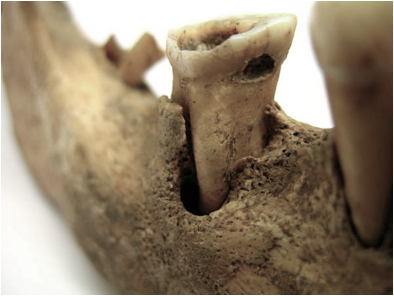The Paleo Diet Is Bullshit

Introduction: Is the Paleo Diet Really “Bullshit”?
Critics often dismiss the Paleo Diet as pseudoscience, while proponents argue that no one has adapted to a post-agricultural diet. Both extremes overlook the fundamental concept that the Paleo framework was always intended as an evolutionary hypothesis, not a static rulebook. If we accept that evolution via natural selection is the central dogma of biology, then the Paleo Diet becomes a testable framework for understanding how human dietary adaptations evolve. It is both a logical model and an experimental baseline — not dogma, but a scientific question in motion.
Let’s examine this question through an evolutionary lens.
The Paleo Diet as an Evolutionary Framework
Evolutionary biology offers a rational model for investigating human diet and health.
-
Evolution via natural selection is the foundation of biological science.
-
The Paleo Diet draws from that foundation to create an ancestral health framework.
-
Paleo as an evolutionary template provides testable hypotheses about human adaptation.
-
Evolutionary theory remains a powerful generator of scientific questions about health and disease.
Just as we recognize that cats are obligate carnivores, the Paleo Diet begins with the premise that humans evolved under specific environmental and dietary pressures — and that our physiology still bears those evolutionary signatures.
A Practical Example: My Cat’s Diet as Evolutionary Evidence
Consider the example of my cat, Flip. Like all cats, she is an obligate carnivore. For years, she ate a prescription formula (Royal Canin Urinary SO) that included corn, rice, and soymeal — foods inconsistent with her evolutionary biology. Despite veterinary supervision, her chronic urinary tract infections persisted. When I transitioned her to a raw, species-appropriate diet consisting of muscle and organ meat, her symptoms disappeared — permanently.
The principle is simple: when diet aligns with evolutionary design, physiological function improves. The same concept underpins the Paleo Diet’s approach to human nutrition.
Humans as an Ongoing Evolutionary Experiment
The Paleo Diet proposes that humans are best suited to the foods our Paleolithic ancestors consumed — meats, fish, fruits, vegetables, nuts, and seeds. Yet, humans are also adaptive generalists, capable of physiological change under environmental and nutritional pressure.
Across the world, people are effectively running millions of small experiments — “n=1” trials — testing their individual tolerance to grains, legumes, and dairy. The results vary widely, underscoring one key truth: human adaptability exists on a spectrum.
Adaptation Takes Time — But It Happens
 Evolutionary adaptation occurs through selective pressure. In agriculture, we’ve seen it clearly in other species: insects develop pesticide resistance within 2 to 20 years, and bacteria evolve antibiotic resistance in even less time. The same selective mechanisms apply to humans.
Evolutionary adaptation occurs through selective pressure. In agriculture, we’ve seen it clearly in other species: insects develop pesticide resistance within 2 to 20 years, and bacteria evolve antibiotic resistance in even less time. The same selective mechanisms apply to humans.
If early agrarian societies suffered from malnutrition and disease — as evidenced by dental caries, bone lesions, and skeletal pathology — that initial maladaptation would have exerted evolutionary pressure. Over 10,000 years, those pressures could favor alleles that improved tolerance to Neolithic foods like grains and dairy.
Populations with longer agricultural histories, such as those in the Fertile Crescent, would have had hundreds of generations to adapt. Populations with shorter agrarian histories — for instance, indigenous and aboriginal groups — may still exhibit greater sensitivity to post-agricultural foods, which could explain their higher incidence of autoimmune and metabolic diseases when exposed to Western diets.
The Genetic Geography of Adaptation
| Population Type | Historical Exposure | Likely Adaptation Level | Common Sensitivities |
|---|---|---|---|
| Fertile Crescent / Mediterranean | ~10,000 years | High | Fewer food intolerances |
| Northern European | 6,000–8,000 years | Moderate | Variable dairy tolerance |
| East Asian | 5,000–7,000 years | Moderate | Soy and rice tolerance, lower dairy tolerance |
| Indigenous / Aboriginal | <1,000 years | Low | High rates of metabolic and autoimmune disorders |
This framework aligns with modern genetic and anthropological evidence, including lactase persistence (a clear adaptation to dairy) and amylase gene copy-number variation (adaptation to starch consumption).
The Mediterranean Diet Paradox
The Mediterranean Diet is often hailed as the gold standard of nutrition. But what if its observed health benefits reflect not the diet’s inherent superiority, but rather the adaptation of its adherents? These populations have lived in the Cradle of Civilization — the birthplace of agriculture — for millennia. It’s plausible that their success with grain-based diets reflects genetic adaptation to Neolithic foods, not universal compatibility.
Why Evolutionary Thinking Still Matters
Dismissing the Paleo Diet as “bullshit” or claiming that “nobody has adapted to modern diets” misses the point. Both positions ignore the dynamic nature of evolution.
The Paleo Diet’s real value lies in its hypothesis-driven framework:
-
It helps us identify baseline human tolerances.
-
It invites self-experimentation to test adaptation.
-
It bridges anthropology, genetics, and nutrition science to improve public health.
In short, the Paleo Diet is less a prescription and more a tool for evolutionary inquiry.
Key Takeaways
-
Evolutionary principles support using the Paleo Diet as a testable health framework, not dogma.
-
Some human populations have adapted to post-agricultural diets through genetic selection.
-
Others remain maladapted, explaining variable responses to grains, legumes, and dairy.
-
The Paleo Diet provides a baseline for testing dietary tolerance and understanding adaptation.
-
Evolutionary nutrition offers an evidence-based bridge between anthropology and modern medicine.

Karen I totally agree with you. Traditional post agriculture groups get adjusted genetically to a specific diet and also develop their diet as a complete system as a results of hundred years of experience This explains the Blue Zones longevity. It has nothing to do with meat consumption only with staying close to traditional diet coupled with basic (antibiotics) medical treatment.
I think this raises interesting questions about anal sex. I have been trying to get my girlfriend to indulge in this for a while to no prevail. Did cave men poke their partners up the bum. I believe the answer to be yes more so because i can imagine a caveman ramming it anywhere but human evolution in its clearest form would suggest no for obvious reasons. Is anal bullshit………..
Makes sense, especially since those who are from those ethnic groups probably have varying amounts of AMY1 to enable them to consume carbs with little negative affects. Sadly, I did not inherent optimal amounts so I just get fat from carbs. If only I was asian or greek.
I agree with everything besides, “the Paleo Diet is probably the best baseline to test your dietary limitations from since it is the original diet of our species”. Depending on the anthropologist or archaeologist you talk to, their answers to what our Paleolithic ancestors used to eat will vary drastically. Also, when you excavate it’s based on a lot of speculation.
Are any archaeologists under the impression that we ate post-agricultural revolution foods like grains and legumes pre-agriculturally?
And if not mimicking a hunter gatherer diet, what’s baseline?
Hi I’m a bioarchaeologist so I thought I would correct you on this. You do realize that the process of domestication of plants and animals takes many generations. In order to domesticate a species you have to fully understand it’s life and reproduction cycle so that humans can overtake it. That does actually mean that people were eating and seeking out grains and legumes pre-agriculturally. We know from archaeological evidence that many species were attempted to be domesticated but it did not always work. Also pre-agricultural diets were not consistent at all, don’t imply that they were. They varied depending on the environment and what was available. In general though people ate what was availible and tasted good. That means they didn’t avoid grains or legumes if they were available.
When I say “Paleo Diet”, I am almost always referring to the macronutrient agnostic version.
Jack,
This magazine is run by the Paleo Foundation, a non-profit organization that certifies food. In order to be showcased or even allowed to advertise on this site, you would have to submit your product for certification. See http://paleofoundation.org for more information.
Karen
So how did our ancestors manage to kill all this big game when they didn’t have guns? I mean a small flint arrow can only kill so much.
The whole basis of Paleo is a fairy tale sold to the masses who can’t think for themselves.
How do a pack of wolves bring down a moose without guns?
That’s right. No guns necessary. Just wit, and cooperation.
Ha ha ha! They hunted together, the same way other pack animals do it. Have you ever taken an anthropology course? Yeah, I didn’t think so.
Have you ever gone hunting before? You don’t just go out and get dinner in an hour. It typically takes 50+ hours to kill a single deer, moose, or bear with a high powered rifle and other modern equipment. It takes a while to find signs of where they live, figure out their patterns, set up blinds or stands and let the animals become comfortable with them, wait for a shot, track the animal down, skin it out, carry it home, prepare the meat, etc. The old running them to exhaustion method requires all of the above except once you see the animal, you have to run a marathon before throwing your weapon
Nevertheless Ellie… somehow the humans managed to kill off the vast majority of the wild predators after they crossed the Bering Strait. I take it you aren’t familiar with the overkill hypothesis, eh? That’s ok. Most people aren’t aware that the land mass of the Americas rivaled that of the African Savannah.
The truth is, humans are the ULTIMATE apex predator. Look around you.
Great article, I think that you could be generally right. I have been on the paleo and the weight fell off me, and yes eating grains after did make me feel bloated and rough. However I seem to be able to get over this feeling, so your hypothesis would be correct. Still like paleo and prefer the diet or more truthfully paleo lifestyle.
This post really opened my eyes to the misconceptions surrounding the Paleo diet! It’s refreshing to see a critical analysis that challenges mainstream claims. I appreciate the evidence-based approach and the emphasis on dietary diversity. Thank you for shedding light on the flaws in the Paleo ideology!
I appreciate this post challenging the Paleo diet. It’s refreshing to see a perspective that questions popular trends and emphasizes the importance of evidence-based nutrition. I’ve always been skeptical of rigid diets that eliminate entire food groups. Balance and moderation seem way more sustainable in the long run!